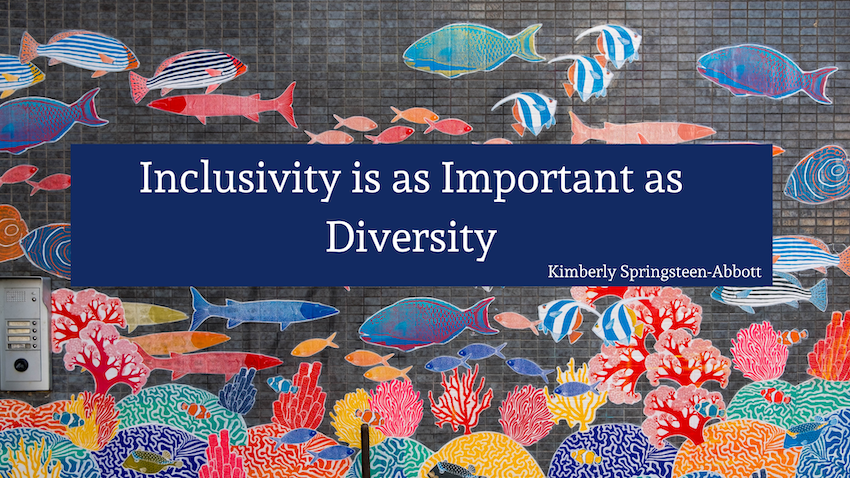Promoting diversity in the workplace has been a top priority of many companies across a broad range of industries. However, many people mistakenly believe that diversity equates to inclusivity when in reality the two are not synonymous. Diversity involves a range of different characteristics, including a persons age, ethnicity, gender, and sexual orientation. Inclusion is centered around whether or not someone feels that they are respected, valued, and accepted. While many human resource departments take the time to ensure that their workplace is a diverse environment, they often overlook whether or not employees feel a sense of inclusivity.
As much as diversity is seen as a huge asset to the success of a business, inclusion is also just as important. In reality, the two should go hand in hand to create a workplace that promotes collaboration, creativity, and employee satisfaction. While there are many organizations that have worked hard to create a diverse company culture, the problem usually lays in the fact that there are employees left feeling isolated due to the lack of inclusion taking place there.
The first step management can take to promote inclusion as well as diversity is to have a clear understanding of what inclusion is. It’s a good idea to consider mandatory training for people at authoritative levels so that everyone’s on the same page. Explain what inclusion is and why it’s so important then create strategies that can be used to foster and strengthen it within the company. Do not make the mistake of thinking that every leader knows what you mean when you talk about inclusivity. Within your company find scenarios that managers face while supervising a diverse team. In a diverse work environment there are ample opportunities to improve the way that business is managed.
It’s imperative that management is listening to the employees. Surveys and focus groups can be a great way to get a handle on the levels of engagement amongst staff and find any inclusion issues that may exist. Anonymous surveys can be a great idea to get a feel for what people need and what makes them feel comfortable. Listening to what’s important to people will help you to make decisions that are strategic to aligning everyone with the same goal. It will also make employees feel that their voice is heard and that it is safe to speak up and express their concerns.
Meetings can be very telling of the true inclusion levels of a company. This is a time when everyone’s contributions should be encouraged. To help foster inclusion it’s a good idea to rotate meeting times so that everyone has the chance to be involved. Be conscious of how you’re communicating and don’t assume that everyone understands the concepts you’re discussing. This is especially true if you have workers who use English as their second language. In fact, it’s a great idea to distribute materials for a meeting beforehand. This can give everyone the opportunity to process the information, react, and formulate any questions or feedback they may have. Not only does this help those that use English as a second language but it also benefits any introverts on your team.
Promote respectful debates and listen to what everyone has to say. Establish measurable goals that can be easily reviewed and conduct check-ins in the time leading up to the date of said goals. This way if there are problems along the way, or if someone is struggling there is time to solve any issues before anyone falls too far behind. When shortcomings are identified in a healthy manner people feel comfortable can be expected to improve and gain understanding much faster.

